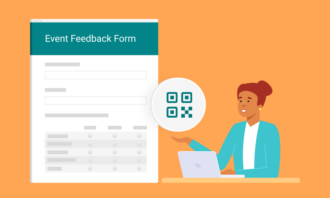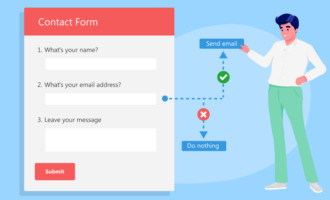If you’re a Microsoft user but haven’t quite mastered all the features of the Office 365 suite, you might be having trouble sharing a form with your recipients. Luckily, the process for getting your form into the right hands can be broken down into two main steps: choosing who to share your form with and choosing how to share it.
Here’s how to share a Microsoft Form.

Migrate existing forms instantly
There’s no need to rebuild your online forms from scratch. Instead, migrate existing forms and submission data into your Jotform account in one click — so you can collect data without skipping a beat.
Your form can not be migrated.
Please ensure that your form URL is correct and that your form is set to “public” before attempting to migrate it again.
Choose who you want to respond
Once you’ve created your form in Microsoft Forms, click the Collect responses button in the top left to bring up the Send and collect responses pane. The dropdown list will give you three sharing options: anyone inside or outside your organization, only people within your organization, or specific people or groups in your organization.
Choose how you want to solicit responses
Once you’ve chosen your respondents, there are a few different ways to collect responses for your form. All of these options are accessible from the same Send and collect responses pane. You can share your form through
- A link: The most straightforward option is by copying and pasting your unique form link to share over email, social media, or on a website.
- Email or instant message: Microsoft Forms also lets you send an email through Outlook or Microsoft Teams directly from the Send and collect responses pane. Just add recipients, a chat, or a channel, customize the email or message text, and choose which tool you want to share it through.
- A QR code: To create a QR code for your recipients to access, select the QR code icon at the bottom of the pane and download the code as a PNG file. You can embed this file anywhere you want your audience to access your form or add it to printed materials.
- An embed code: To get a code snippet to embed your form on a website, click the third icon at the bottom of the pane. Copy the code and then paste it where you want the form to appear on your website.
How to choose the best form-sharing method
There are pros and cons to each method of sharing your form. Copying and pasting your unique link is the most versatile sharing option, as you can paste the URL in a number of different places. It’s the easiest way to directly provide form access by adding the link to a new email, group message, or social media post. You could even print it on marketing materials.
For signage or brochures, though, a QR code is more convenient for your recipients. They can simply scan the code with their smartphone or tablet without having to manually enter a link into their browser.
If you’re going to be sharing your form on your website, the embed option is the best way to go. Embedding the form on your web page will look more seamless than just adding the shareable URL, and it will stand out more for your recipients while they’re scrolling through your page.
Email is the best choice if you aren’t planning on sending the link via an email marketing platform like Mailchimp, for example. If the link is part of a larger email campaign, you’ll likely want to be able to customize the design more than you can with the email option in Microsoft Forms. But if you’re just trying to send the link to a large group of email addresses that you can easily paste into the share field, this may be the most convenient option.
How to share forms easily with Jotform
If you’re looking for a free alternative to Microsoft Forms, Jotform is another great option that makes it just as easy to share forms. Once you create your form and click on the Publish tab, you’ll see the Quick Share screen. From here, you can copy your form’s unique link, invite your form recipients via email, share your link to your social media accounts, or download a QR code.
If you’d like to share your form via email, you can create a customized email. Just click Share on Email and edit your email subject, content, and recipients in this window.
There are a few reasons you might choose Jotform over Microsoft Forms — the first obvious one is the cost. You can sign up for a free Jotform account and start sharing forms immediately, while you’ll need a paid Microsoft 365 account if you want to take the Microsoft route (though there is a limited free trial). If you’re not already a Microsoft user and you just need to create simple, shareable forms, you may not want to pay for a full business or personal account.
One of the biggest factors to consider is whether you want to start with a premade template or have complete customization control over the layout of your form and the questions you can add.
Microsoft Forms gives you several templates and a handful of question formats to choose from, while Jotform’s drag-and-drop form builder lets you fully customize every aspect of your form, whether you’re using a template or starting from scratch. Plus, the ability to upload images, add widgets, and integrate with other programs through Jotform will appeal to those who need that extra functionality.
If you don’t need to incorporate data from other Microsoft products like Excel or SharePoint, Jotform is a great option to check out.












































Send Comment: